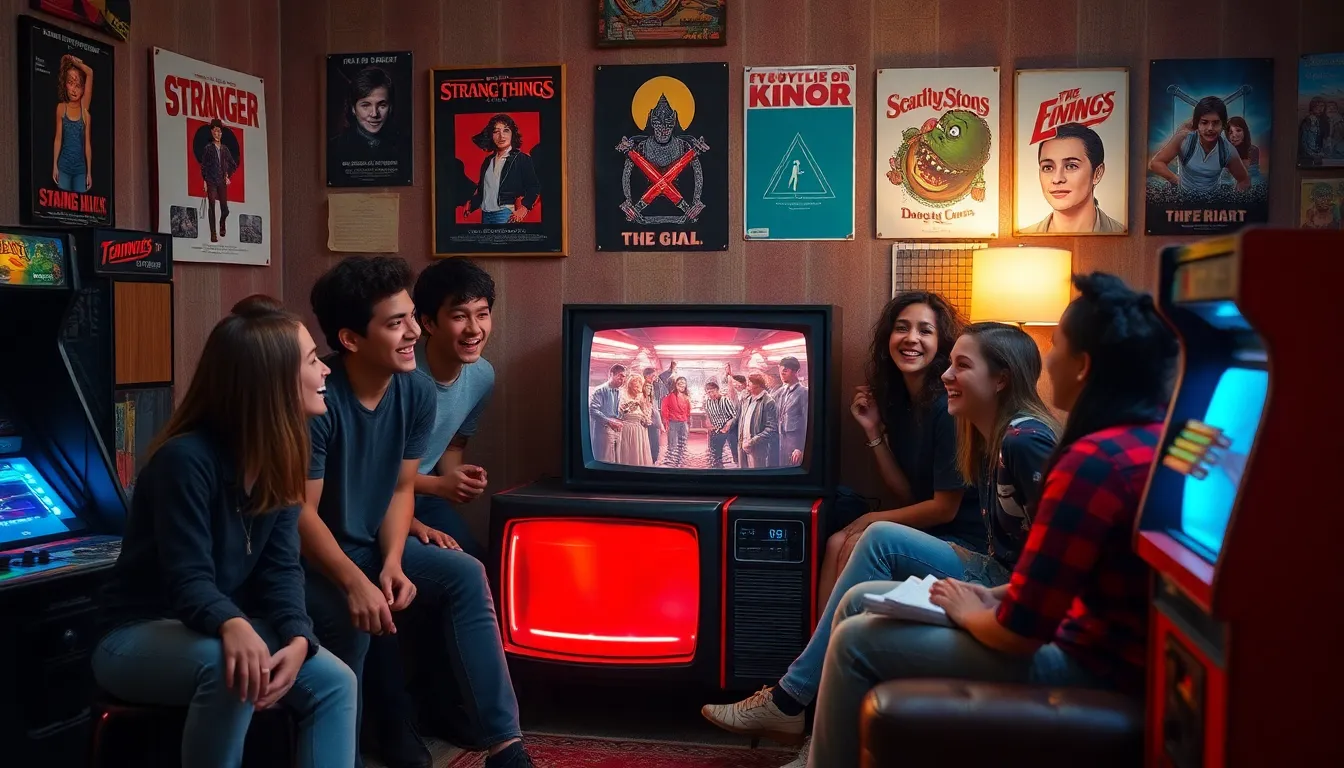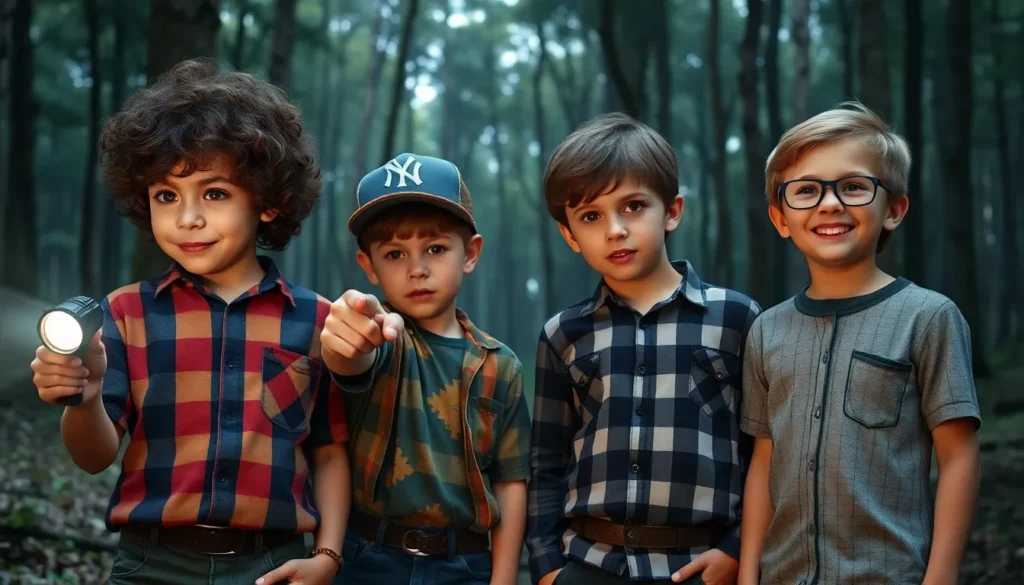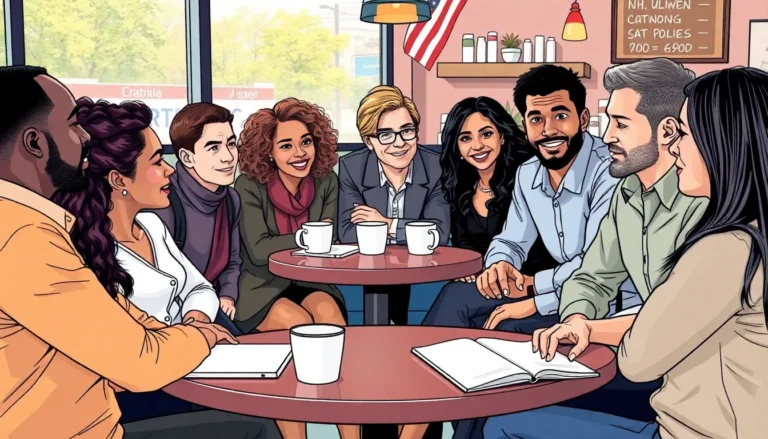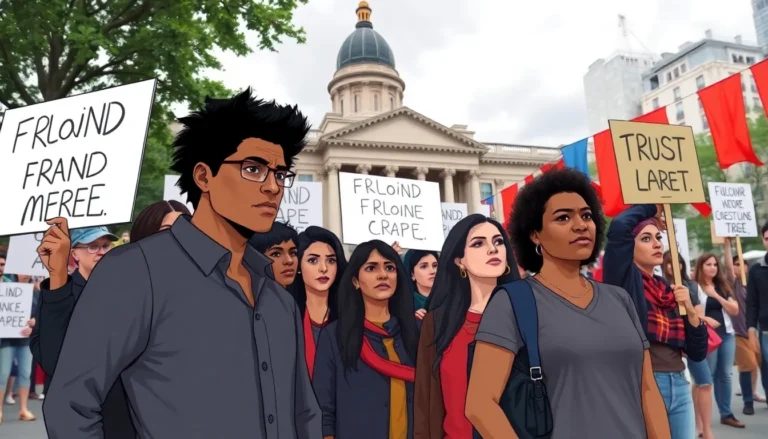In a world where nostalgia meets supernatural thrills, Stranger Things took the streaming landscape by storm. When it first premiered on Netflix, it captivated audiences with its blend of 80s pop culture, compelling characters, and gripping mysteries. The show quickly became a cultural phenomenon, igniting discussions and fan theories across social media platforms.
Released on July 15, 2016, Stranger Things introduced viewers to the small town of Hawkins, Indiana, where the ordinary collides with the extraordinary. As the series unfolds, it explores the disappearance of a young boy and the emergence of a girl with extraordinary abilities. This captivating premise set the stage for a thrilling journey that would leave fans eagerly anticipating each new episode.
Table of Contents
ToggleOverview Of Stranger Things
Stranger Things captivates audiences with its mix of nostalgia and supernatural intrigue. Each season unfolds more mysteries surrounding the town of Hawkins and its residents. The narrative focuses initially on the disappearance of Will Byers and the arrival of a girl named Eleven, who possesses psychokinetic abilities.
Characters like Mike, Dustin, and Lucas, Will’s friends, form a close-knit group that ventures into the unknown to uncover the truth. They encounter various supernatural entities, including the Demogorgon, which adds suspense and drama to the storyline.
The series pays homage to 1980s pop culture, referencing films, music, and games from that era. This blend appeals to a broad audience, invoking fond memories while attracting newer generations. Themes of friendship, courage, and the battle between good and evil enhance the show’s emotional depth.
Stranger Things not only entertains but also ignites extensive fan theories and discussions on various online platforms. Its unique storytelling and dynamic characters contribute to its status as a cultural phenomenon.
Significance Of The Release Date

The release date of Stranger Things marks a pivotal moment in television history, influencing cultural trends and audience behavior. Premiering on July 15, 2016, it introduced a unique blend of nostalgia and supernatural storytelling that resonated widely.
Cultural Impact
Stranger Things reinvigorated 1980s pop culture, leading to a resurgence of interest in the music, films, and fashion of that decade. The show inspired merchandise, themed events, and even Halloween costumes, making it a staple in contemporary culture. References to iconic films such as E.T. and The Goonies sparked discussions about the era’s cinematic influences. It fostered a communal viewing experience, with fans engaging in watch parties and social media discussions, further solidifying its place in pop culture history.
Audience Reception
Stranger Things garnered critical acclaim and a dedicated fan base upon its release. With a Rotten Tomatoes score of 97%, it received praise for its storytelling, character development, and production design. Viewers connected deeply with the show’s themes of friendship and bravery, often sharing personal anecdotes that mirrored the struggles faced by the characters. The series’ unique narrative structure encouraged binge-watching, and it became a topic of conversation across various platforms, solidifying its status as a cultural phenomenon.
Behind The Scenes
The production of Stranger Things involved meticulous planning and collaboration, contributing to its unique style and success.
Production Timeline
Stranger Things entered development in early 2015, with the Duffer Brothers at the helm as creators and showrunners. Filming commenced in November 2015 in and around Atlanta, Georgia. The series wrapped up in early 2016, allowing for post-production work to begin. Netflix announced the official release date as July 15, 2016. This timeline set the stage for the show’s debut, foreshadowing its cultural impact.
Cast and Crew Insights
The ensemble cast includes Winona Ryder as Joyce Byers, David Harbour as Jim Hopper, and Millie Bobby Brown as Eleven, among others. The chemistry among the actors enhanced character relationships, providing authenticity to the storyline. The Duffer Brothers sought to cast actors who embodied the essence of their characters, leading to carefully selected auditions. The show’s crew, including cinematographer Tim Ives and composer Kyle Dixon, crafted distinct visual aesthetics and soundscapes that paid homage to 1980s films. Together, they contributed to the series’ atmospheric storytelling, driving its popularity and resonant themes.
Marketing Strategies
Stranger Things implemented various innovative marketing strategies to create buzz before its release. Teasers and trailers generated anticipation, showcasing the show’s unique blend of nostalgia and supernatural thrills. The strategic decision to drop the entire first season at once allowed for binge-watching, fostering immediate engagement and extensive online discussions.
Social media channels played a critical role in the campaign. Platforms like Twitter and Instagram featured interactive content, including polls and fan art, encouraging audience participation. Hashtags like #StrangerThings became popular, establishing a community around the series.
Partnerships with influencers boosted visibility. Collaborations with popular YouTubers and other content creators amplified reach, engaging younger audiences. Additionally, promotional events, including themed pop-up shops and exhibitions, enhanced experiential marketing, allowing fans to immerse themselves in the show’s universe.
Merchandising further extended the brand. Apparel, toys, and collectibles featuring iconic symbols from the series capitalized on fandom. Seasonal merchandise around Halloween also drew in consumers, tapping into the show’s horror elements.
The marketing strategy’s success helped elevate Stranger Things to cultural phenomenon status, influencing audience behavior and driving viewership.
Stranger Things not only captivated audiences upon its release but also reshaped the landscape of television. Its unique blend of nostalgia and supernatural storytelling resonated deeply with viewers, creating a cultural phenomenon that continues to thrive. The show’s critical acclaim and innovative marketing strategies paved the way for a devoted fanbase eager for more. As it celebrates its legacy, Stranger Things remains a testament to the power of compelling narratives and strong character connections. The impact of its debut on July 15, 2016, will be felt for years to come, influencing future productions and keeping the spirit of the 1980s alive in modern pop culture.




